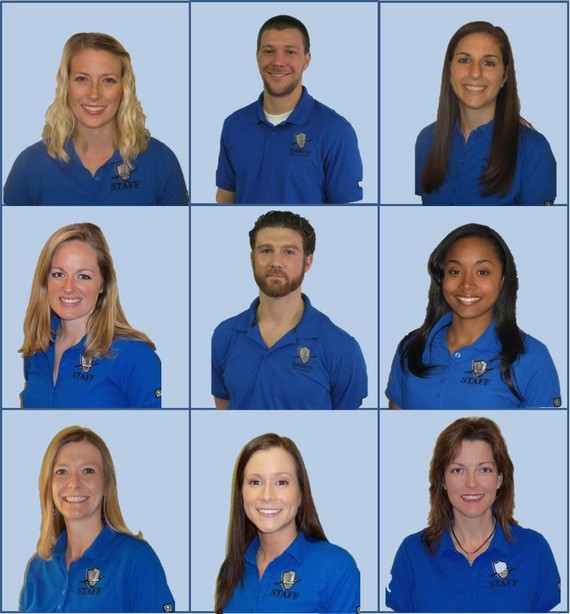SUBMIT. VOTE. WIN.
ENTRY FROM: The Top 100 Health Promotion Professionals
Nominee: Robert Barrilleaux
There's no "I" in Wellness Team
As the Wellness Manager at BlueCross BlueShield of South Carolina, Robert Barrilleaux has been responsible for improving upon corporate wellness initiatives for the company’s workforce of more than 10,000 employees across multiple states. While formal wellness initiatives have been in place at the company since 1992, the past two years have seen significant growth under Robert’s leadership. Initially hired as a Fitness Coordinator at BlueCross, he was soon promoted to Fitness Supervisor and then Wellness Manager. In his six years at BlueCross, Robert and his team have been able to move closer to a results-oriented program by expanding wellness offerings to all locations, forging connections with senior staff through an organized Wellness Committee, implementing research-based wellness programs, integrating meaningful data and providing valuable incentives to participants. His ability to tirelessly find solutions for seemingly impossible challenges has been valued by his staff, superiors, co-workers and others in the industry. As he says, “Success in my life has never been based on what I knew, but instead on being able to see what I needed to learn.”

Robert earned B.S. in Kinesiology with a minor in Business from Louisiana State University. He has achieved Personal Training and Corrective Exercise certifications through NASM, ACE and NSCA. Robert’s military experience and interest in working with others to improve themselves initially sparked his interest in wellness. As a result of those efforts, he was awarded Military Achievement Awards for overseeing soldier physical readiness. Although it is difficult to pinpoint, he feels as though the experience of leading people in battle and being looked to in times of crisis has been more valuable for his career than any one educational endeavor.
Our most successful large-scale program addressed physical inactivity. After piloting several versions of the program using activity thresholds supported by ACSM, the “Get in the Habit” program was launched in 2013. The program consisted of tracking physical activity through an online platform, competition between locations and valuable incentives with a goal of progressively increasing activity levels.
Following the first year of the program, it was found that participants in the program showed a greater decrease in risk factors related to physical activity, stress, nutrition and mental health when compared to those who did not participate. Additionally, the combined number of risk factors per employee dropped almost 5% more for those who participated in the program. A visible presence of employees utilizing walking trails has been noted by Senior Staff and employees visiting at least one of the company’s five onsite fitness centers have been up an average of 3% in 2014.
A major focuses of our department Manager is to continually keep CEO support by anticipating what senior-level staff will be asking for. Through this practice, the “Get in the Habit” program involved unprecedented support from the CEO, including the privilege for participants to wear tennis shoes, a total of 40 hours paid time off for employees who successfully completed each quarter of the program, a $5,000 donation to the charity of the winning location’s choosing and an in-person presentation to the winning location.
While our company is spread over 35 locations, we have been able to create cohesive wellness teams by utilizing on-site volunteer Wellness Champions and nine highly qualified full-time Wellness and Fitness staff members. A Wellness Committee was put in place to address the large-scale concerns of employee health, benefits and corporate culture.
Throughout the planning process, we ensure that we have steps in place to ensure that we are necessary data. All of our offerings now require that Employee ID is collected since it is the most constant and reliable piece of identifying information within our company. We have been able to integrate wellness program, fitness center, health plan and Human Resources Demographics information all through the collection of Employee ID.
By reviewing data from health risk assessments, health screenings, employee health interest surveys and health plan utilization, we are able to design targeted interventions. A conscious effort has been made to focus on the behaviors that lead to better health, such as physical activity with “Get in the Habit,” rather than the conditions that often result from poor health behaviors.
In our company, we have come to find that a supportive environment is best sustained through reaching middle management. We have provided them with resources regarding desk exercises, building-specific exercise routes, pedometer challenges and in-person departmental presentation. Beginning in 2015, managers will actually be rated on their involvement with Wellness Programs on their annual performance review.
In 2013, Robert and three other employees won the fastest time in the corporate division for the United States Marine Corp Mud Run and placed 36th out of 938 teams overall. He has also mandated that he and his staff members include at least three 15-minute physical activity breaks throughout the day and often holds walking meetings with staff.
Robert’s most valuable experiences have been those in which mistakes have been made. He has also found the importance in being open and taking risks. His advice to others is to, “Listen to people, gather relevant information and make your own judgments. Don’t follow along just because it has always been done that way.”
Robert increased his knowledge of technology and data collection to the point where he has created intricate bridges between program data to allow for ad hoc and historical reporting. Data from our online platform, fitness centers, PHA, health screenings, sports clubs and other services have all been integrated for the first time. This system was created at no cost using Microsoft software.
The most valuable outcome for this innovation is that we finally have solid benchmarks to help guide our future plans towards becoming a results-oriented wellness program. We are able to see what is working more clearly and what needs more attention. For example:
-82% of employees participated in at least one wellness program in 2013 and 47% participated in a prevention-focused program as well as an intervention-based program
-56% of bottled beverages sold onsite are healthy choices
-94% of South Carolina and 74% of off-site locations were engaged in at least one wellness program in 2014
-3,635 employees viewed a wellness webcast this year
-76% of management opened the Wellness Management Newsletter
Robert views nation’s declining health overall as an opportunity to create more value on finding effective initiatives. With the implementation of healthcare reform, society’s desire for an “easy” solution to health conditions, litigious employees and organizations and the ability for medications to keep unhealthy people alive longer, the industry has an opportunity and responsibility to blaze a trail for increasing value to what works instead of introducing ineffective new fads.
Over the next five years, Robert plans to:
-encourage the use of the Plan-Do-Check-Act model in corporate wellness
-push for increased incentives for meeting research-backed standards and decrease incentives for complacent employees who do not take personal responsibility for their health
-contribute to a proven method for lowering claims costs associated with employer driven initiatives
You can vote as often as you like. You may vote once per hour per entry.
When you come back, use the search function to find this entry.
You can vote as often as you like. You may vote once per hour per entry.
When you come back, use the search function to find this entry.


Comments are in order of newest to oldest
Post a Comment